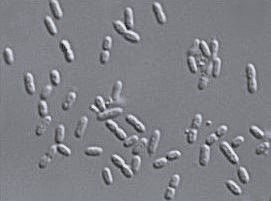Yeast & Fermentation: the Crabtree Effect
- Sylvia Rose

- Feb 16
- 3 min read
The Crabtree effect causes yeasts like Saccharomyces cerevisiae to produce alcohol in an oxygenated habitat under osmotic pressures from high environmental glucose levels. Usually, yeast would produce water.

It generates ethanol in anaerobic conditions. These are the rules, but Saccharomyces cerevisiae doesn't always play by the rules. Under certain conditions, this yeast prefers making booze.
Fermentation in anaerobic settings lets S. cerevisiae convert glucose into CO2 and ethanol quickly. This pathway is for rapid energy production, giving the yeast an advantage in competitive environments.

During aerobic respiration via the TCA cycle, S. cerevisiae typically produces more biomass for a higher energy yield per glucose molecule. It uses this energy to grow strong and prosper.
Many brewers aerate the yeast in the wort before starting the fermentation process. Oxygenation allows microbes to form more robust colonies with lots of energy.

S. cerevisiae can produce about 2.5 g of ethanol per liter of yeast per hour under optimal conditions with elevated glucose levels. The Crabtree effect illustrates flexibility of cellular metabolism influenced by available nutrients.
It's not the only yeast to show this phenomenon but it's plentiful and easy to study. Others include species of Saccharomyces, Schizosaccharomyces, Debaryomyces, Brettanomyces, Torulopsis, Nematospora, and Nadsonia.

The Citric Acid, TCA or Krebs Cycle
Under normal aerobic conditions, most yeasts prefer to generate energy through the tricarboxylic acid (TCA) or Krebs cycle. In this process, glucose is broken down into pyruvate, which enters the TCA cycle.
End products are ATP, carbon dioxide and water. This efficient pathway results in significant biomass production. When the external glucose concentration is elevated, S. cerevisiae turns from a respiration-focused organism to one favoring fermentation even in oxygen.

This phenomenon prioritizes ethanol production over biomass accumulation. It works to transform glucose into ethanol and carbon dioxide instead of using resources for energy-efficient aerobic respiration.
The artificial dominance of fermentation shown by the Crabtree effect shows the yeast's strategy to prioritize quick energy generation even when oxygen is available. In this way the yeast monopolizes sugar sources.
Or maybe the acetic acid bacteria are hungry ...

Mechanism of Action
The Crabtree effect represses respiration and enhances the fermentation pathway. The switch is a calculated strategy for survival and proliferation in environments where both sugar and competition are abundant.
Key enzymes in glycolysis, such as hexokinase and phosphofructokinase, are upregulated when high levels of glucose are detected. Concurrently, the activity of enzymes involved in the TCA cycle is downregulated.
This leads carbon catabolite repression and corresponding increase in the fermentation pathway. Various transcription factors and signaling pathways, including those sensing nutrient levels, are influential.

This metabolic choice is not random. It's an adaptive response to ensure survival in sugary environments. Fermentation helps S. cerevisiae thrive. The yeast can rapidly use available sugars, fermenting them into alcohol.
Proteins like Snf1 kinase and Mig1 transcription factor feature in this process. They regulate metabolic pathways, to shut down less favorable options and prompt the yeast to reach the decision to ferment.

Non-Fiction Books:
Fiction Books:
READ: Lora Ley Adventures - Germanic Mythology Fiction Series
READ: Reiker For Hire - Victorian Detective Murder Mysteries


